- paladino music
- Madeleine Dring
- Richard Meszto
- Arnold Bax
- Laurence Lesser
- Pablo Ferrandez
- Gloucestershire
- Away in a Manger
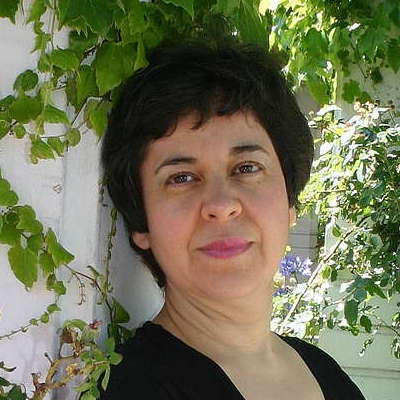 SPONSORED: A Seasoned Champion of New Music. Argentinian-American pianist Mirian Conti in conversation with Andrew Schartmann.
SPONSORED: A Seasoned Champion of New Music. Argentinian-American pianist Mirian Conti in conversation with Andrew Schartmann.
All sponsored features >>
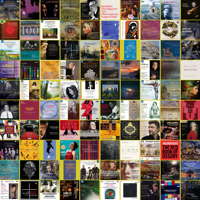 UPDATES: There's a new feature every day at Classical Music Daily. Read about the various ways we can keep in touch with you about what's happening here.
UPDATES: There's a new feature every day at Classical Music Daily. Read about the various ways we can keep in touch with you about what's happening here.
Almost as Verdi would have Wanted
GIUSEPPE PENNISI was in the audience for 'Aida'
On 31 January 2023, a new production of Aida opened in Rome. This is a well-known opera, also because, for decades, it was staged almost every year in the summer season at the Baths of Caracalla in 'colossal' versions. The theater was full, in every order of seats, with added chairs after the last row of orchestra stalls.
Aida is one of Giuseppe Verdi's most beautiful and most accomplished operas, but a curse weighs on the productions, similar to that, to stay on the Egyptian theme, of Tutankhamun. It is considered a three-rings circus 'blockbuster', or so, for slippery shows in summer arenas. The appearance of the camel and, if possible, of the elephant, is more important than what happens in the orchestra pit and the squeal - if not the scream - matters more than the legati, the vocal diminuendo or the mezze voci of either the soloists or the chorus. In outdoor performances, whether there is 'environmental' amplification or not, the performers tend to a firefighting direction and the singers tend to shout from beginning to end.
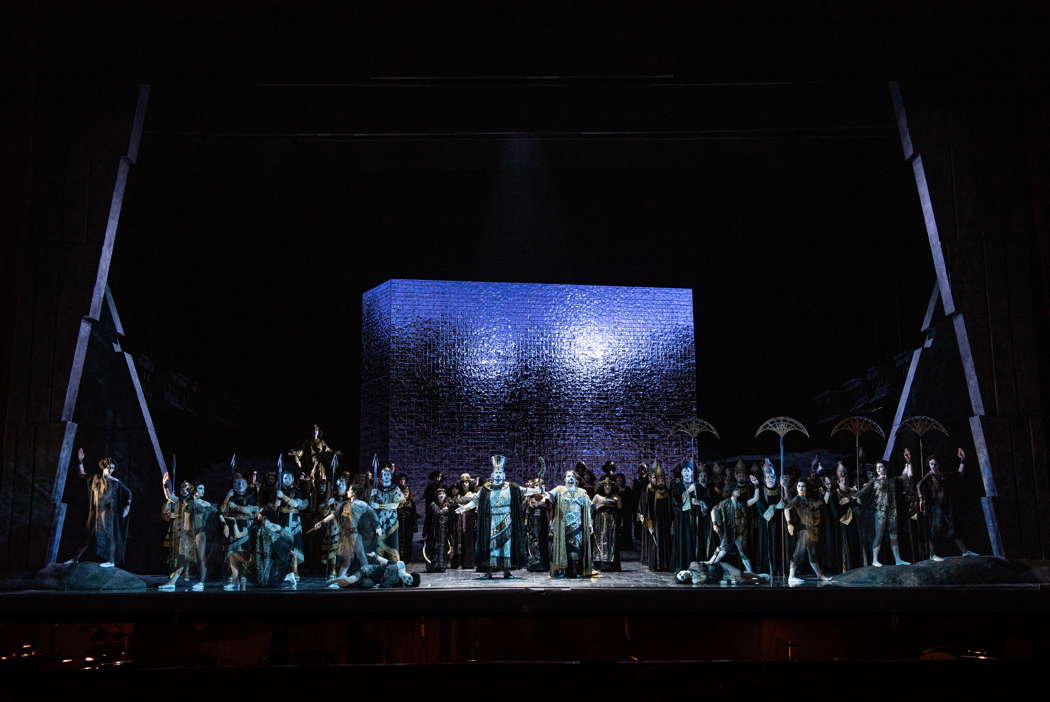
A scene from the Opera di Roma production of Verdi's Aida.
Photo © 2023 Fabrizio Sansoni
Your chroniqueur had the opportunity, back in January 1969, to be at some performances at the Italian Opera House in Cairo. There in 1871, Aida debuted as commissioned by Khedivé, on the occasion of a double event: the opening of the Suez Canal and the inauguration of an Italian theater. Italian was the language spoken at court. King Faruk was the first of the dynasty to be able to speak Arabic. The Cairo Opera was a pleasant theater with boxes similar to the Valle Theater in Rome. It had just over seven hundred seats, where in 1969 the traveling company of the Berlin Staatsoper Unter den Linden - then Egypt experimented with the 'real socialism' of East Germany - staged minimalist productions, designed for tours in low-income countries, of works by Berg (understandable) and Orff - curious because the author of Carmina Burana was the 'court composer' in Hitler's Reich. The Italian Opera House in Cairo was destroyed by fire in 1970. It was rebuilt in the 1990s with a modern and efficient architectural structure.
Aida is an almost intimate work (with some, however very limited, concession to the two events for which it was commissioned). Verdi incorporated in it some of the main lessons of Wagner's 'music of the future'. He had not yet attended the Italian debut of Lohengrin in Bologna, but had read Wagner's theoretical writings. Above all, the integrity of the orchestral continuum, whose dazzling richness, in each of the seven scenes in which the four acts of the opera are divided, is never interrupted by 'closed pieces' - arias, duets or trios.
Recently this tradition - less colossal than the conventional ones - has been partly recovered. For example, in 2000, Rome Opera managed to 'sell out' by dusting off a 'minimalist' edition, conceived in the 1970s by Mauro Bolognini (when John Cox prepared an Aida similar to the Metropolitan Opera in New York). Essential scenes (on two levels) by sculptor Mario Ceruli, hieratic choreography by Ricardo Nunez (and with all the nudes, and semi-nudes, then in fashion) and functional lighting effects, are especially important to distinguish the full afternoon of Act II - that, to be clear, of the triumph - from the late night of the Act III: that, instead, of the Nile. Perhaps also because it is easily 'portable' and 'exportable', in the space of three decades, Opera di Roma has managed to sell or rent it to many other theaters.
Another important initiative is that of the Toscanini Foundation, which from 2000 to 2003 carried around an Aida almost as Verdi would have wanted it; The 'almost' is a must, because of some cuts to dances, for reasons of economy and transportability. The staging was born from a brilliant idea of that devil Franco Zeffirelli - author of direction and scenes; the beautiful costumes are by Anna Anni - who has often ventured with maxi-Aida. It was designed for the Busseto Theatre, whose stalls have sixty-six seats (and as many in the boxes), with painted scenes of a vaguely art deco Egypt, very accurate acting by (three alternating) young casts chosen by international selection, fifty brilliant (and young) orchestral players, and dances reduced to a minimum (but with Carla Fracci in the role of priestess). It was not an iconographic Aida: it focused on the drama of love and jealousy (with a capricious and impudent princess Amneris). This reading made it possible to understand every word - indeed each intonation - of a libretto less banal than what is presented in the vulgate on Verdi. Even the orchestra is brought back to the fifty musicians probably in the pit in Cairo in 1871 - not over a hundred, as at the Arena di Verona.
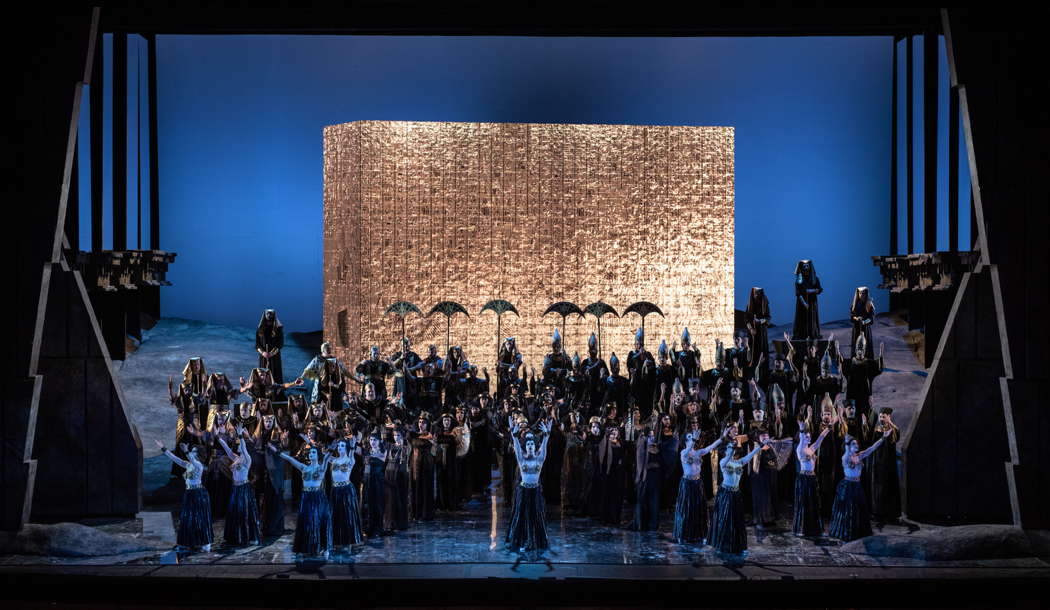
A scene from the Opera di Roma production of Verdi's Aida.
Photo © 2023 Fabrizio Sansoni
This premise seems essential because the musical part of the 31 January 2023 Rome performance incorporates Verdi's intuitions, thanks above all to the mastery of the conductor, Michele Mariotti. He has deepened the most innovative aspects of a score that can be considered Verdi's most Wagnerian opera: the leitmotif intertwined by the splendid introduction of strings, the orchestral symphonism and the limited presence of musical numbers. I had already heard Mariotti conducting Aida in Paris, via streaming during the pandemic - a show offered to members of the National Association of Music Critics.
Mariotti's touch is felt since the symphony but it is very clear, in Act I, at the helm of soloist and orchestra in 'Numi pietà del mio soffrir', as well as in the duet with choir with which the opera closes. Mariotti had applause in the open scene, as well as in the second interval, and ovations at the curtain fall - all deserved. He brought the 'real Verdi' back to Rome, as Riccardo Muti did a decade ago. From Mariotti, as musical director of Teatro dell'Opera di Roma, we expect great things, and we know we will not be disappointed.
Among the voices, we must start with Gregory Kunde (Radames), called at the last moment to replace an ill Fabio Sartori. Kunde also belongs to the brood of young American agility tenors who arrived at the Rossini Opera Festival forty years ago; how can we not forget him in Semiramide? He is now sixty-eight years old and has suffered from leukemia. With commitment, he has changed his voice: now he sings Verdi and verismo. One could not help but have some apprehension. Instead, he gave a very good performance from the cavatina to the final duet, passing through the difficult third act, and with an excellent acute, without the ringing of a thirty-year-old.
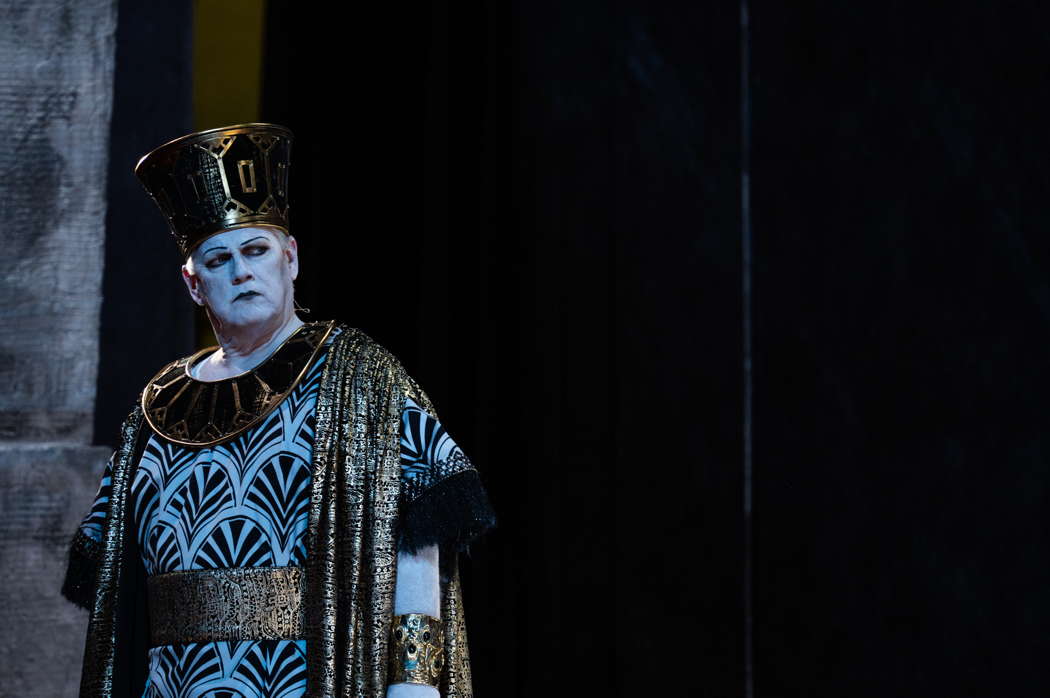
Gregory Kunde as Radames in Verdi's Aida. Photo © 2023 Fabrizio Sansoni
Aida was Krassimira Stoyanova, of great level, especially in 'O Patria mia, mai più di riverrò'.
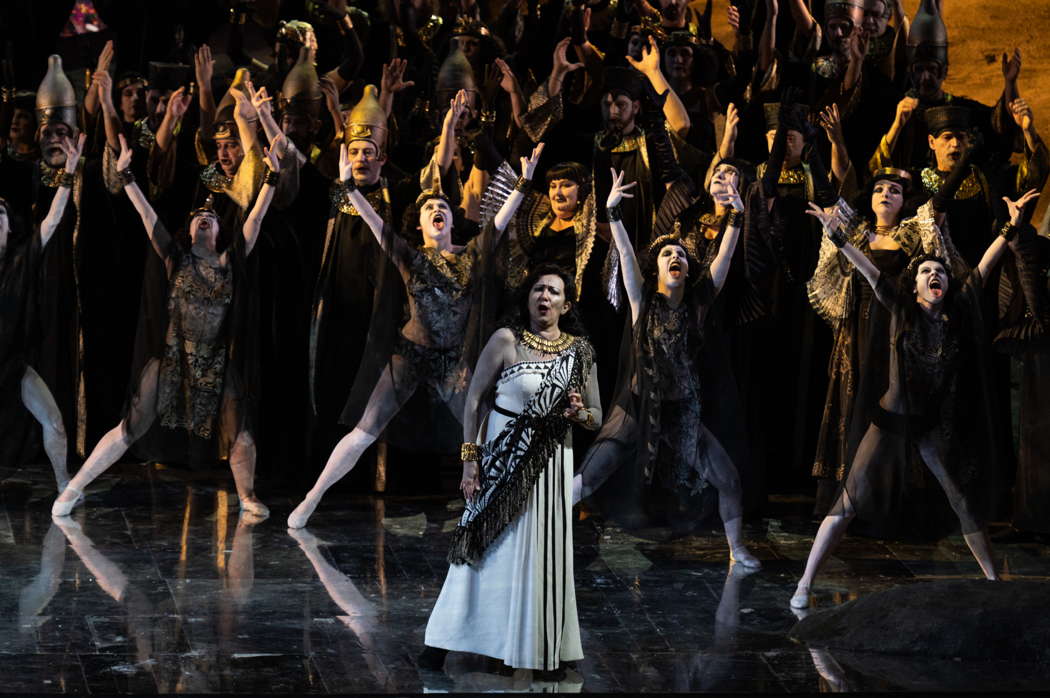
Krassimira Stoyanova in the title role of Verdi's Aida.
Photo © 2023 Fabrizio Sansoni
Ekaterina Semenchuk gave a great performance, particularly in the Act III scene and aria with chorus.
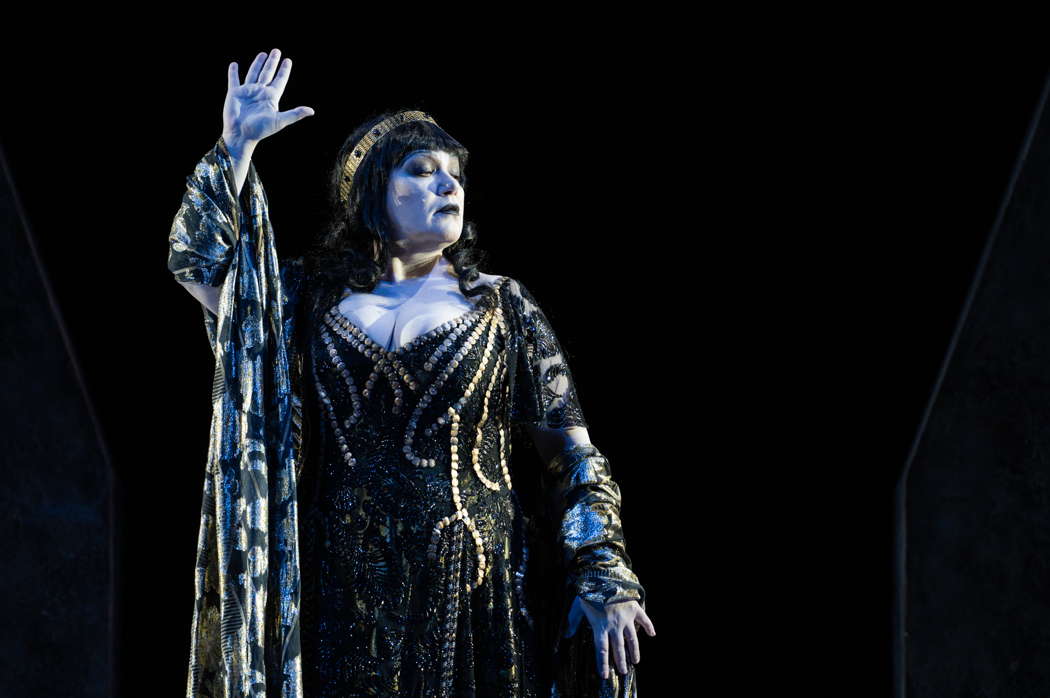
Ekaterina Semenchuk as Amneris in Verdi's Aida. Photo © 2023 Fabrizio Sansoni
Vladimir Stoyanov was an effective Amonastro and Riccardo Zanellato a good level Ramfis. The chorus, now prepared by Ciro Visco, was always excellent.
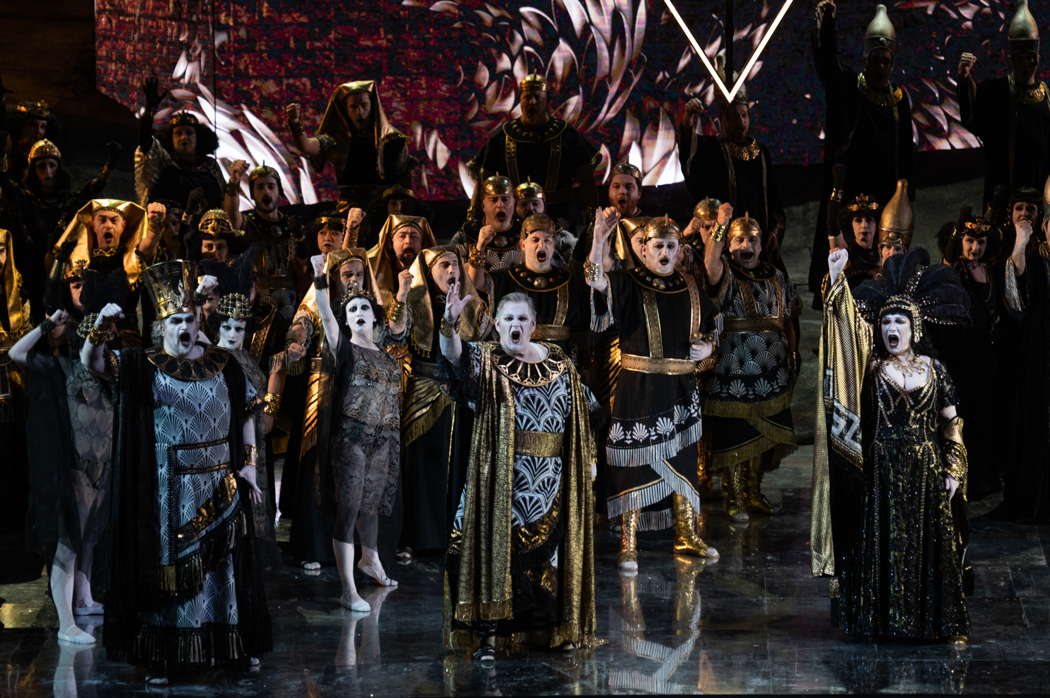
Riccardo Zanellato as Ramfis, Gregory Kunde as Radames and Ekaterina Semenchuk as Amneris with members of the chorus in Verdi's Aida.
Photo © 2023 Fabrizio Sansoni
I do not hide the fact that I was afraid of David Livermore's stage direction, especially after his interviews in which he declared that he was inspired by Cabiria by Giuseppe Pastrone, a 'blockbuster' film of 1914. Fortunately, someone - perhaps Mariotti - held him back, and this time Livermore and his 'creative team' - excellent costumes by Gianluca Falaschi - produced an acceptable production. There are, however two serious flaws: firstly, Aida seems to take place all at night, while the first scene of Act I and the whole of Act III are clearly in full sun - the libretto and, more importantly, the music, say so; secondly, Rome Opera has an excellent corps de ballet - why hire the twenty mime-dancers wanted by Livermore? This was a useless expense for poor dancing. When will certain directors learn to respect the creators of the text and music?
Copyright © 2 February 2023
Giuseppe Pennisi,
Rome, Italy



